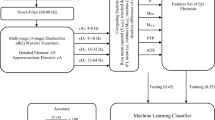Interaction of EEG and BOLD brain activity was studied in subjects during EEG-biofeedback training course (20 sessions). Healthy male subjects aged 20-35 underwent a training course of sound-reinforced upregulation of alpha- (20 participants) or beta-activity (9 participants). Pretraining, intermediate (after 10 sessions), and post-training fMRI-EEG recordings were conducted in resting state and during the participants’ attempts to upregulate the power of target EEG activity. Regression analysis was carried out on three sessions in total; the main changes in BOLD signal connected with alpha rhythm power were related to the subjects who performed alpha training “good enough” (were able to increase alpha power at least at one stage). Maximum changes in BOLD response connected with alpha rhythm power were observed in the form of deactivation at T8 lead in the right hemisphere, and at F7 in the left hemisphere, and involved middle frontal gyrus, triangular part of inferior frontal gyrus, superior temporal gyrus, parietal lobule, and insula. The identified areas correspond to the executive control network (ECN) and anterior salience network (ASN).
Similar content being viewed by others
References
Bowman AD, Griffis JC, Visscher KM, Dobbins AC, Gawne TJ, DiFrancesco MW, Szaflarski JP. Relationship between alpha rhythm and the Default Mode Network: an EEG-fMRI study. J. Clin. Neurophysiol. 2017;34(6):527-533.
Feige B, Scheffler K, Esposito F, Di Salle F, Hennig J, Seifritz E. Cortical and subcortical correlates of electroencephalographic alpha rhythm modulation. J. Neurophysiol. 2005;93(5):2864-2872.
Goldman RI, Stern JM, Engel J Jr, Cohen MS. Simultaneous EEG and fMRI of the alpha rhythm. Neuroreport. 2002; 13(18):2487-2492.
Kluetsch RC, Ros T, Théberge J, Frewen PA, Calhoun VD, Schmahl C, Jetly R, Lanius RA. Plastic modulation of PTSD resting-state networks and subjective wellbeing by EEG neurofeedback. Acta Psychiatr. Scand. 2014;130(2):123-136.
Kozlova LI, Shtark MB, Mel’nikov ME, Verevkin EG, Savelov AA, Petrovskii ED. EEG-fMRI study of alpha-stimulation neurobiofeedback training course. Bull. Exp. Biol. Med. 2016; 161(5):623-628.
Lamoš M, Mareček R, Slavíček T, Mikl M, Rektor I, Jan J. Spatial-temporal-spectral EEG patterns of BOLD functional network connectivity dynamics. J. Neural Eng. 2018;15(3). ID 036025. doi: https://doi.org/10.1088/1741-2552/aab66b
Laufs H, Kleinschmidt A, Beyerle A, Eger E, Salek-Haddadi A, Preibisch C, Krakow K. EEG-correlated fMRI of human alpha activity. Neuroimage. 2003;19(4):1463-1476.
Liu Y, Bengson J, Huang H, Mangun GR, Ding M. Top-down modulation of neural activity in anticipatory visual attention: control mechanisms revealed by simultaneous EEG-fMRI. Cereb. Cortex. 2016;26(2):517-529.
Mayhew SD, Bagshaw AP. Dynamic spatiotemporal variability of alpha-BOLD relationships during the resting-state and task-evoked responses. Neuroimage. 2017;155:120-137.
Mayhew SD, Ostwald D, Porcaro C, Bagshaw AP. Spontaneous EEG alpha oscillation interacts with positive and negative BOLD responses in the visual-auditory cortices and default-mode network. Neuroimage. 2013;76):362-372.
Ros T, Théberge J, Frewen PA, Kluetsch R, Densmore M, Calhoun VD, Lanius RA. Mind over chatter: plastic up-regulation of the fMRI salience network directly after EEG neurofeedback. Neuroimage. 2013;65:324-335.
Rusiniak M, Lewandowska M, Wolak T, Pluta A, Milner R, Skarźyński H. The possibilities and limitations of simultaneous EEG-fMRI registration — the alpha rhythm study. Przegl. Lek. 2015;72(11):616-619.
Seeley WW, Menon V, Schatzberg AF, Keller J, Glover GH, Kenna H, Reiss AL, Greicius MD. Dissociable intrinsic connectivity networks for salience processing and executive control. J. Neurosci. 2007;27(9):2349-2356.
Shtark MB, Kozlova LI, Bezmaternykh DD, Mel’nikov MY, Savelov AA, Sokhadze EM. Neuroimaging study of alpha and beta EEG biofeedback effects on neural networks. Appl. Psychophysiol. Biofeedback. 2018;43(2):169-178.
Zhan Z, Xu L, Zuo T, Xie D, Zhang J, Yao L, Wu X. The contribution of different frequency bands of fMRI data to the correlation with EEG alpha rhythm. Brain Res. 2014;1543:235-243.
Author information
Authors and Affiliations
Corresponding author
Additional information
Translated from Byulleten’ Eksperimental’noi Biologii i Meditsiny, Vol. 168, No. 8, pp. 149-154, August, 2019
Rights and permissions
About this article
Cite this article
Kozlova, L.I., Petrovskii, E.D., Verevkin, E.G. et al. EEG Alpha-Rhythm-Related Changes in BOLD fMRI Signal in Neurofeedback Training. Bull Exp Biol Med 168, 199–204 (2019). https://doi.org/10.1007/s10517-019-04674-y
Received:
Published:
Issue Date:
DOI: https://doi.org/10.1007/s10517-019-04674-y




